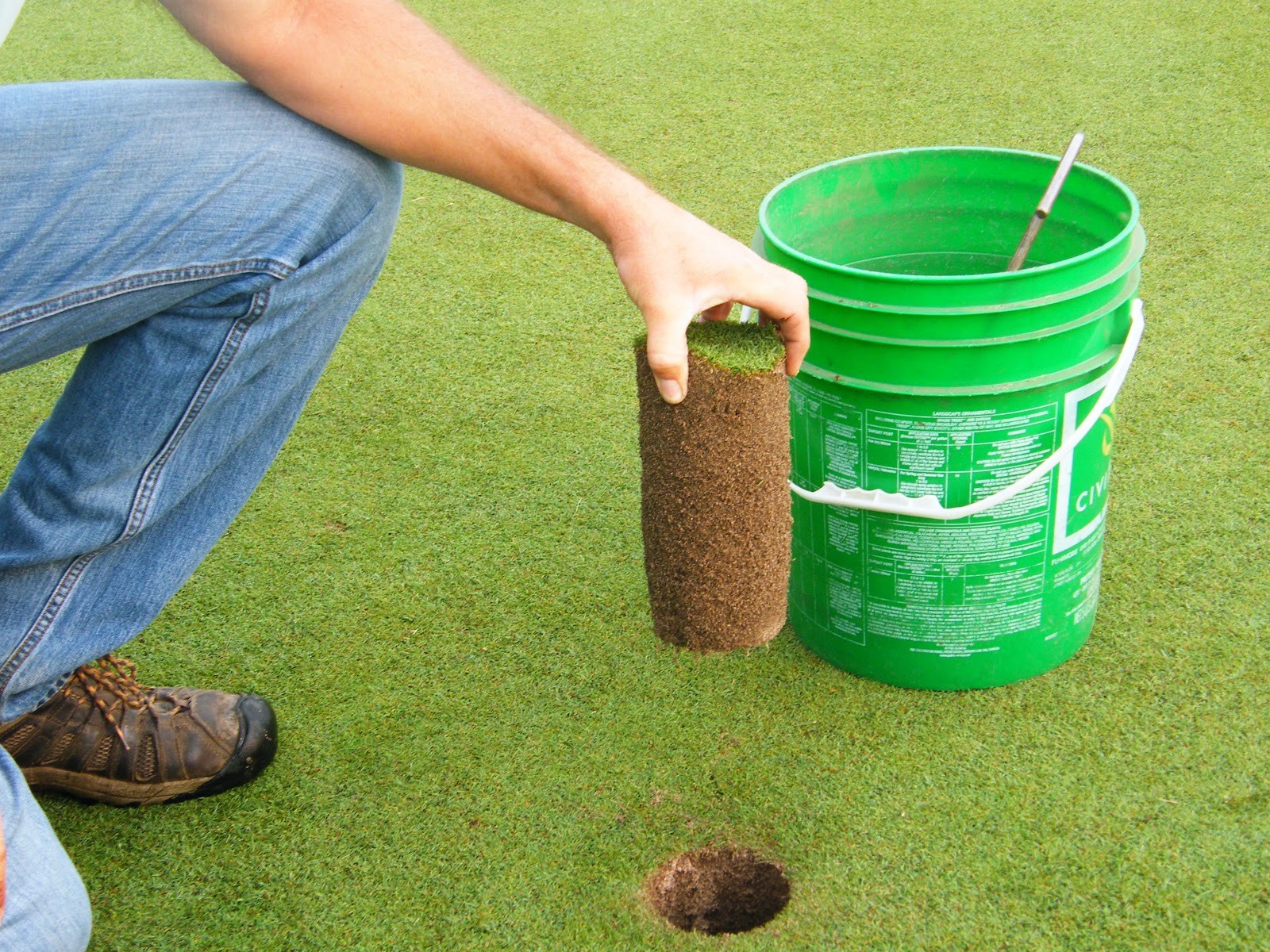Such sustained traffic levels have taken their toll on our tender young turfgrass. Concentrated areas of cart traffic are definitely showing the wear and tear. Some of our new tees are not draining as well as we would like. Wet tee surfaces combined with intense traffic is a recipe for disaster. Some of these tees have taken a beating. We will continue to seed these surfaces and deep-tine aerify to improve internal drainage. The new greens are holding their own and though not very fast, they are fairly smooth and putting true. I am confident we will be able to produce fast putting surfaces in the future, keeping in mind that we must balance green speed with pace of play.
Our fairways have a ways to go before they are acceptable. The fairways are thin and sparse in some areas for several reasons:
- Our initial pre-plant plan was to fumigate all 28 acres of fairway. Fumigation would have killed 95% of all weed seeds including those of annual bluegrass (poa). Due to budgetary constraints, the fumigation was cancelled. This left the inferior option of using Roundup (glyphosate) to kill existing grass and weeds. Roundup has no effect on weed seeds Therefore, a very substantial population of annual bluegrass germinated during seeding. This summer we began a poa reduction/elimination program using growth regulators and a specialty herbicide. Most of the voids in the playing surface are where annual bluegrass established and has since checked out. This program is extreme but necessary. The closer we get to 100% bentgrass fairways, the better off we will be from both a maintenance and playability perspective. The creeping bentgrass will fill these voids along with additional seeding, as needed (see photos).
- There is a great deal of construction compaction in the fairways that is inhibiting root growth. Aerification (punching holes) to oxygenate the soil is how we remedy that condition and it will be ongoing into the foreseeable future. With wall-to-wall golfers, this can be challenging!
- We did experience some disease outbreak during this last warm and humid stretch of weather that thinned some turf. This outbreak was due to elevated fairway fertility levels associated with the 2nd year of the grow-in. I don't anticipate this disease to be a problem in the future when we get to regular maintenance fertility levels. On a brighter note, the stubborn dollar spot disease that has been running rampant over so many golf courses this summer is non-existent at Keller. Due to plant breeding efforts, the 007 bentgrass planted at Keller is highly resistant to the dollar spot fungus.
- Often mistaken by golfers for post-aerification conditions, earthworm castings are most prevalent during high moisture conditions in the spring and the fall. Their activity is a sign of healthy soils but they can make a mess. Currently there are no inexpensive or legal control solutions on the market short of a fairway topdressing program using sharp, angular sands (see photos).
- Another unwanted byproduct of golf course construction can be ground water finding its way to the surface in areas that were previously dry. At Keller, this began during the spring monsoons of 2014 in fairways 8, 14, and 16 and behind 6 green. This can be caused by several things. Old drain tile and irrigation lines severed during the installation of the new irrigation system can continue to move water from one location to another, creating wet spots. Moving soil and regrading areas can cause water flowing below ground to change directions and daylight at the surface. I believe we are experiencing both scenarios. We intend to expand drain tile lines into these new wet areas this fall to dry them up.
 |
| Here is an up close look at a patch of poa under stress and fading away. |
 |
| An area in 10 fairway that had a high population of poa. The existing bentgrass and additional seeding will fill these voids. |
 |
| These are earthworm castings that golfers often confuse with holes from aerification. |
 |
| This is the appearance that these castings give to a section of fairway turf. |
I will attempt to post on a more regular basis through the end of the golf season. Other topics I intend to cover include proper use of the driving range, Environmentally Sensitive Areas (ESA) on the golf course and drain tile installation. At the end of the year I am planning on transitioning from this renovation blog to a maintenance blog.
At this point in time, the golf course will be closing Sunday, November 2.
Enjoy the rest of the golf season.












